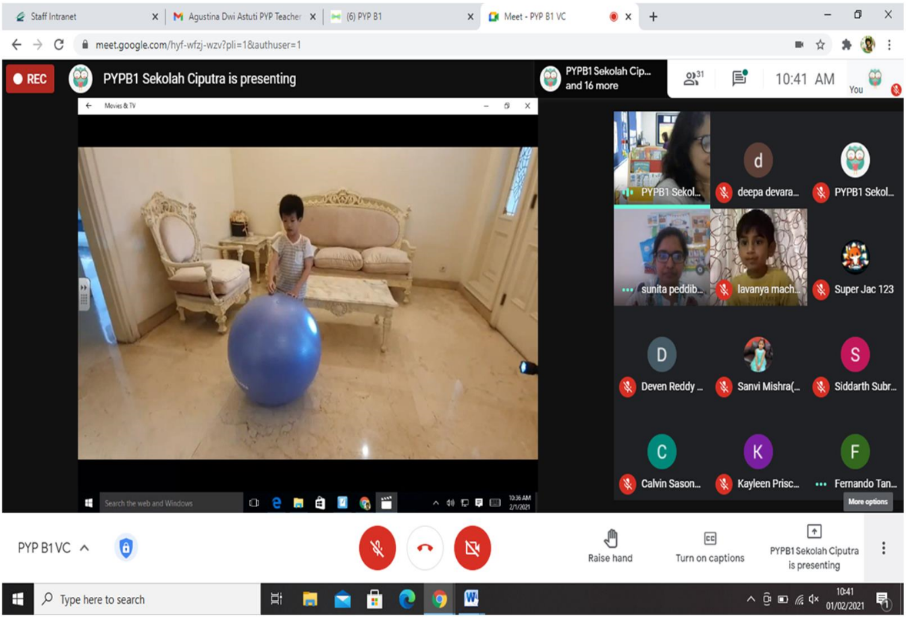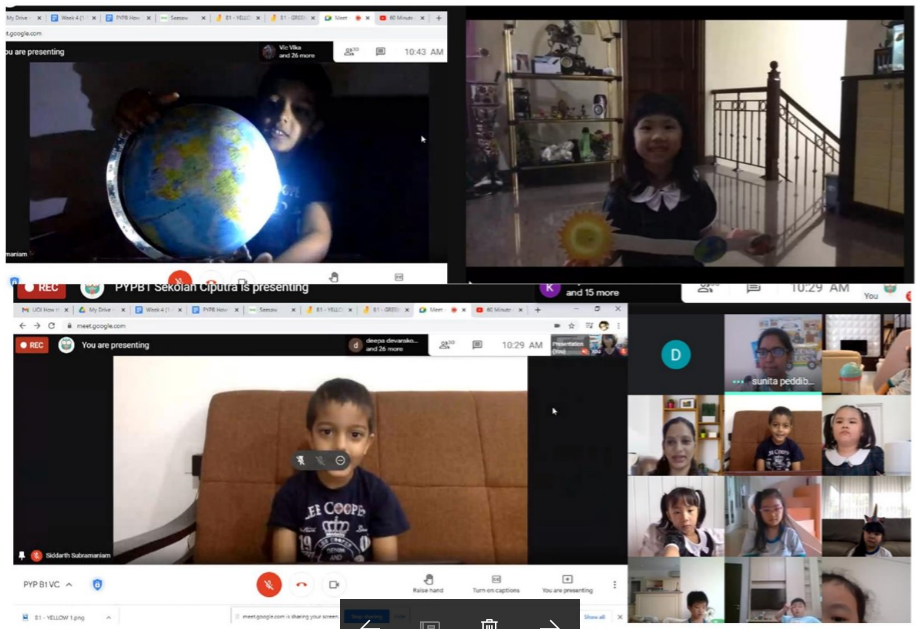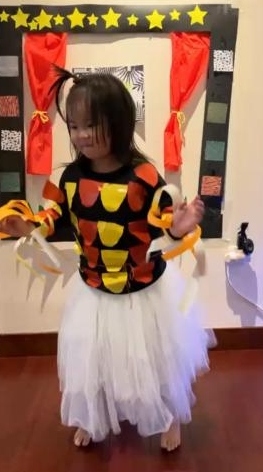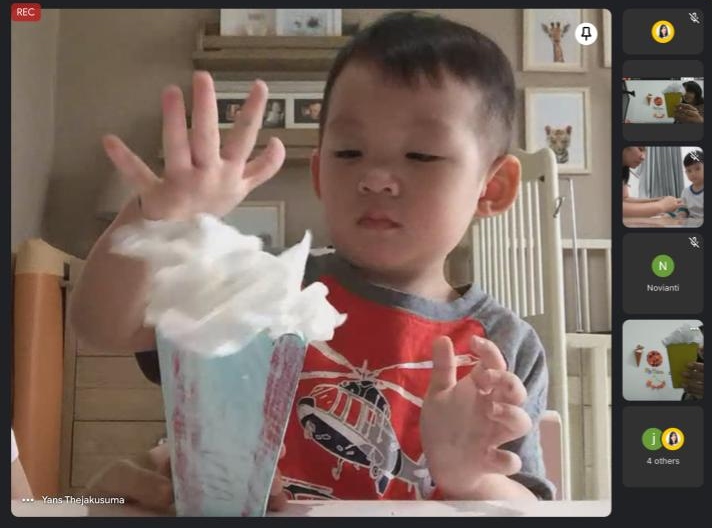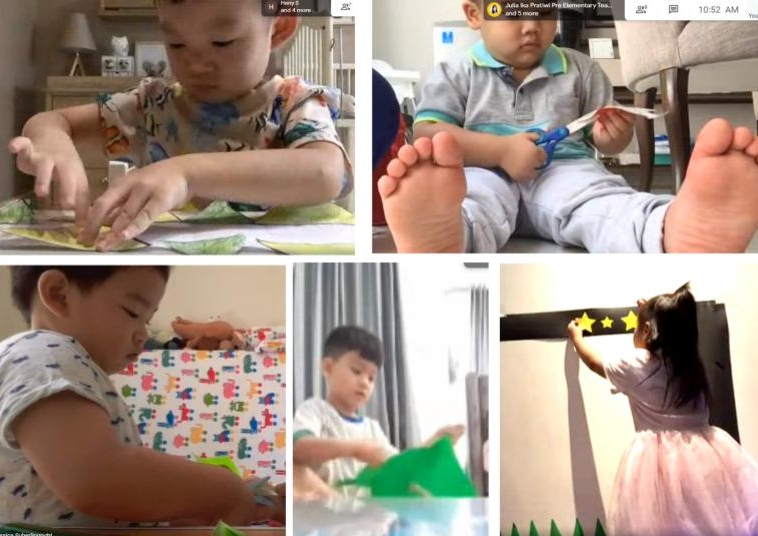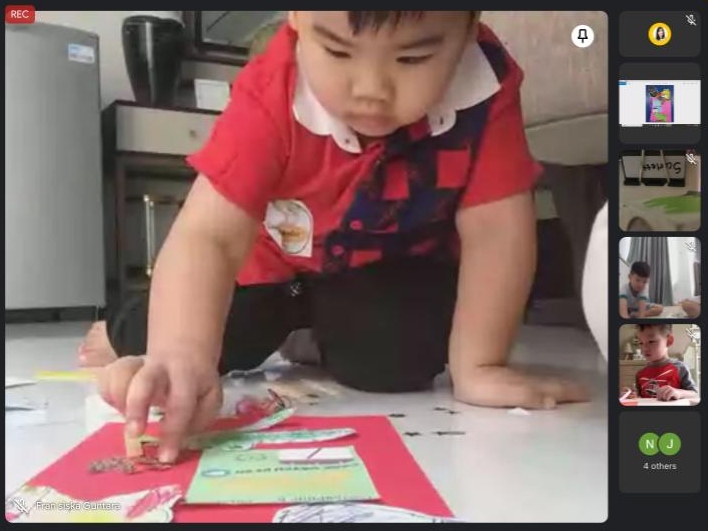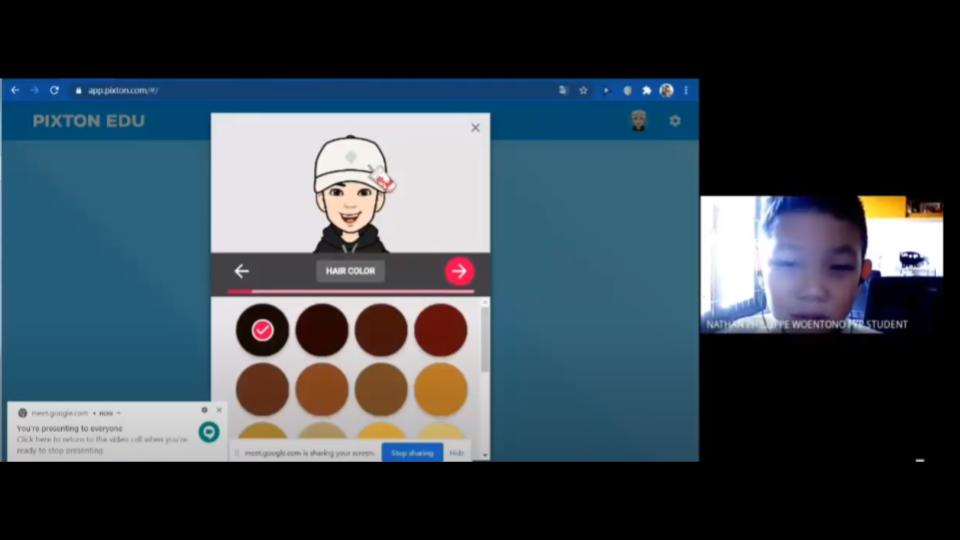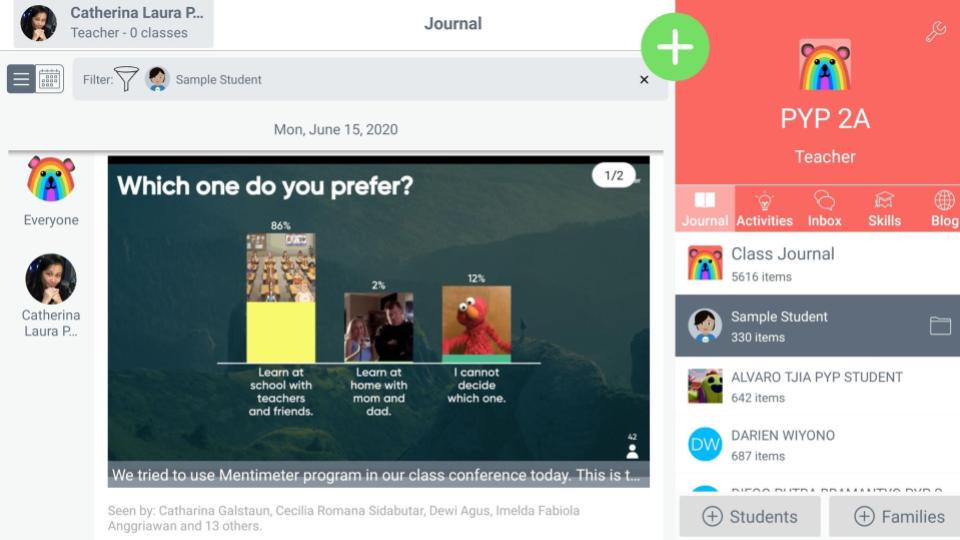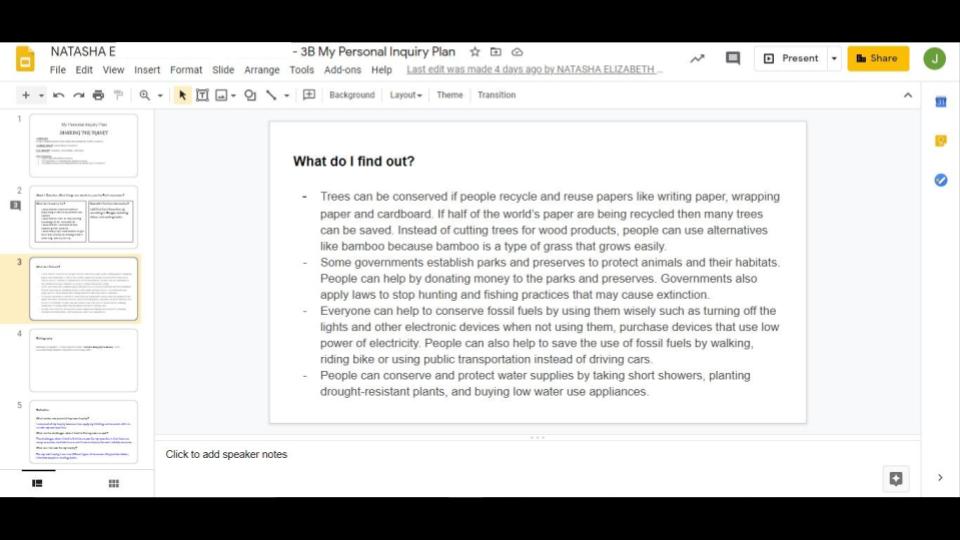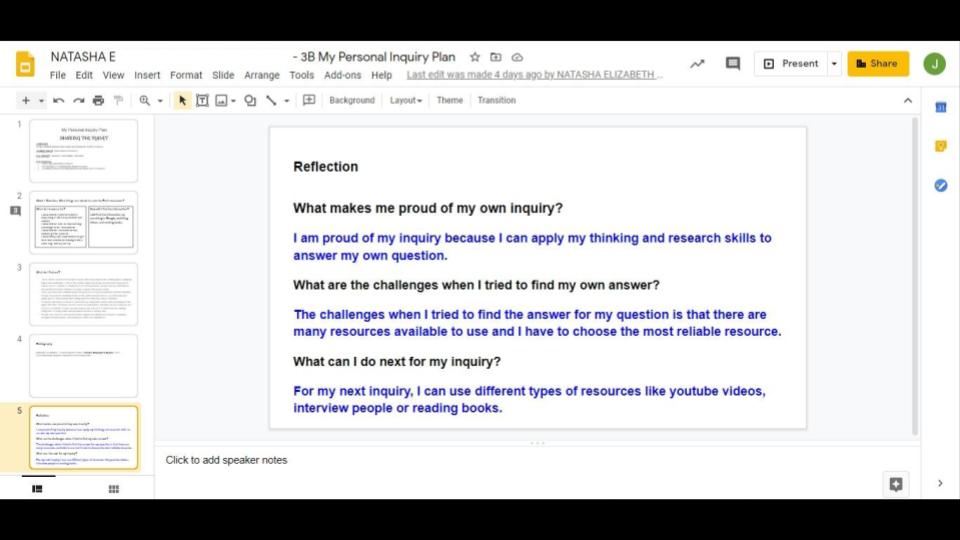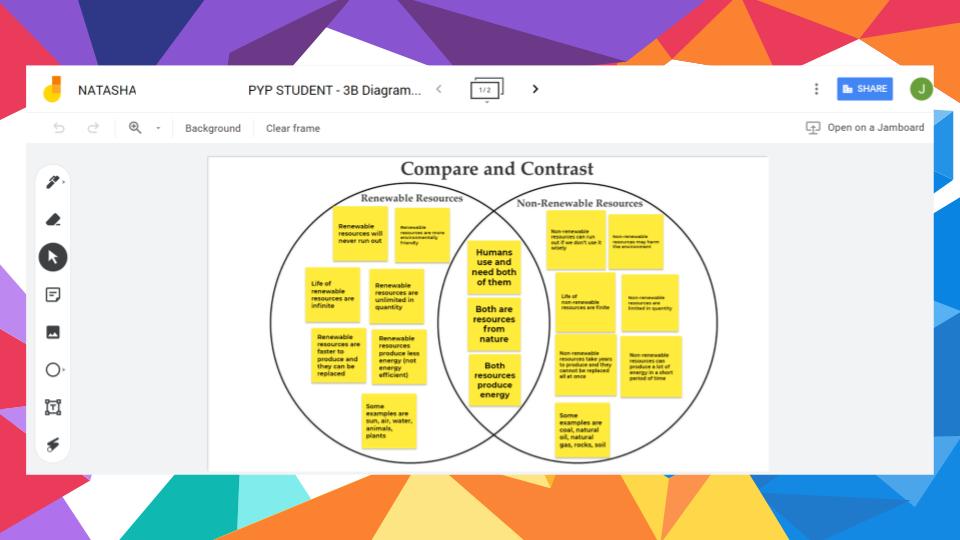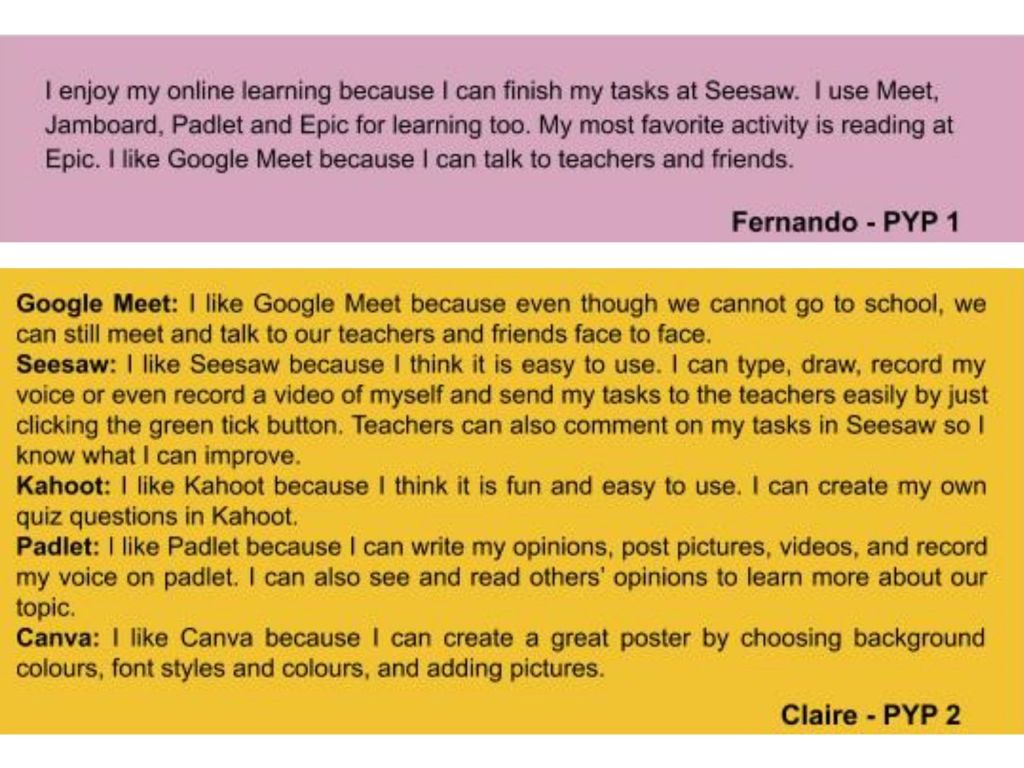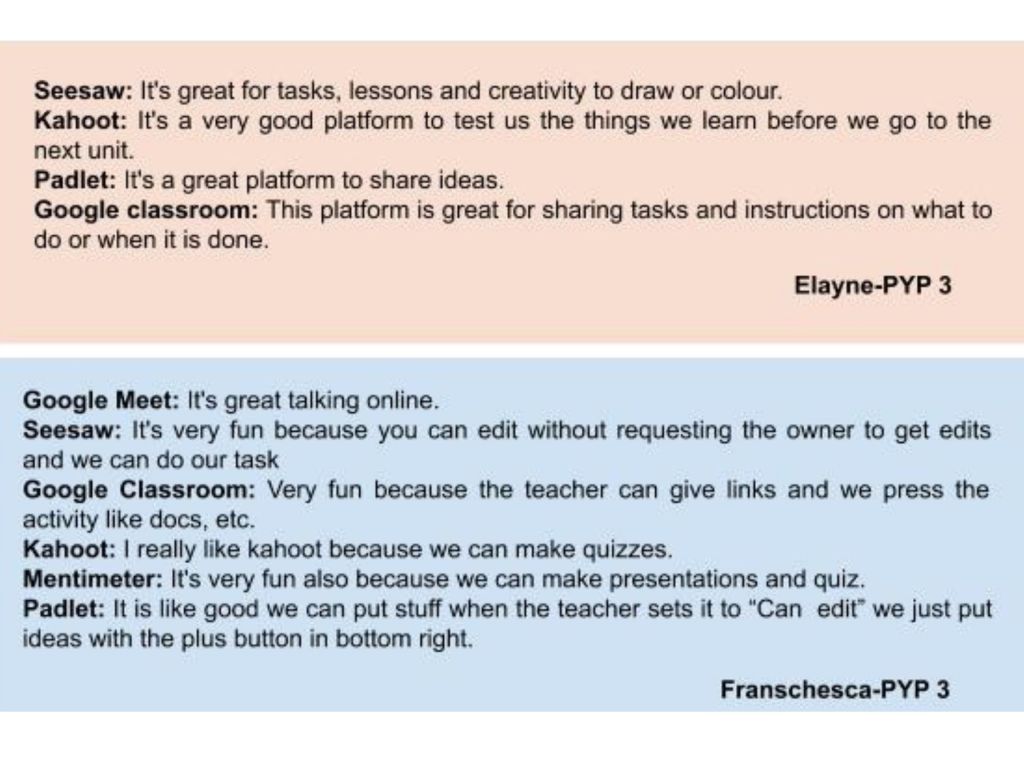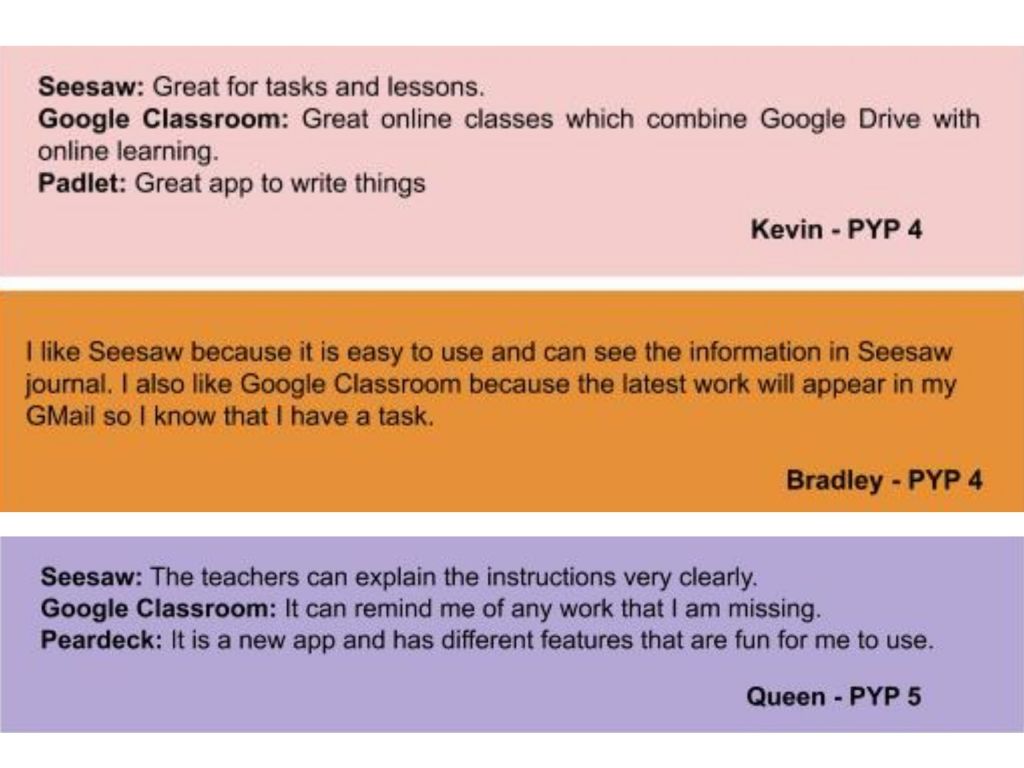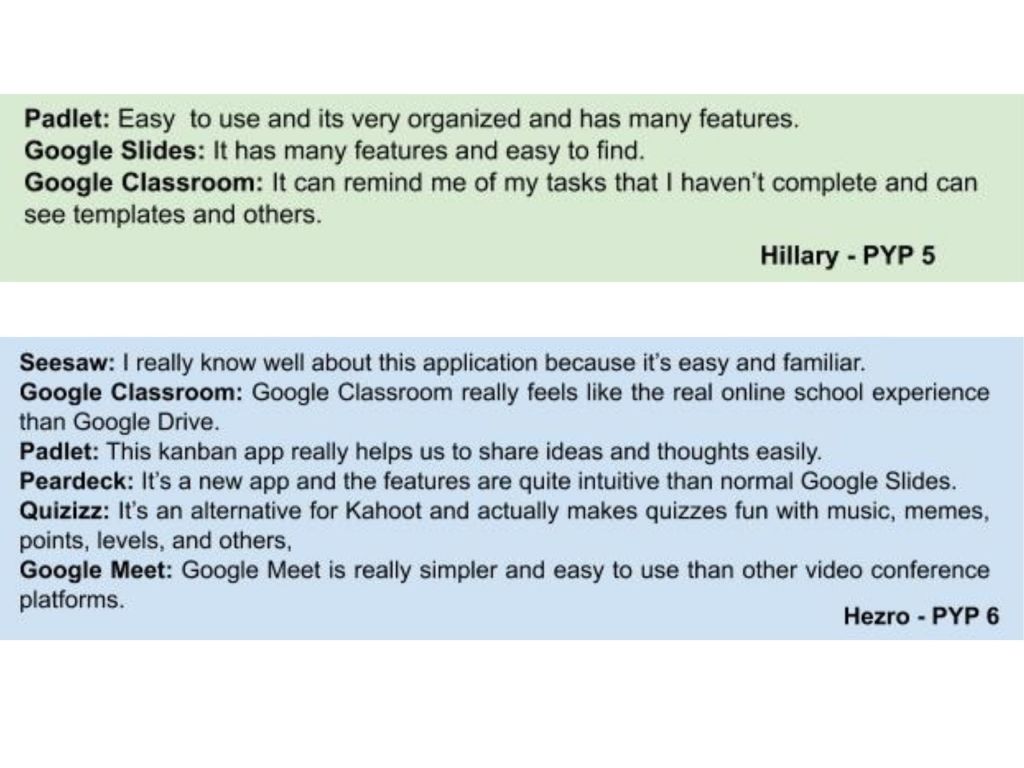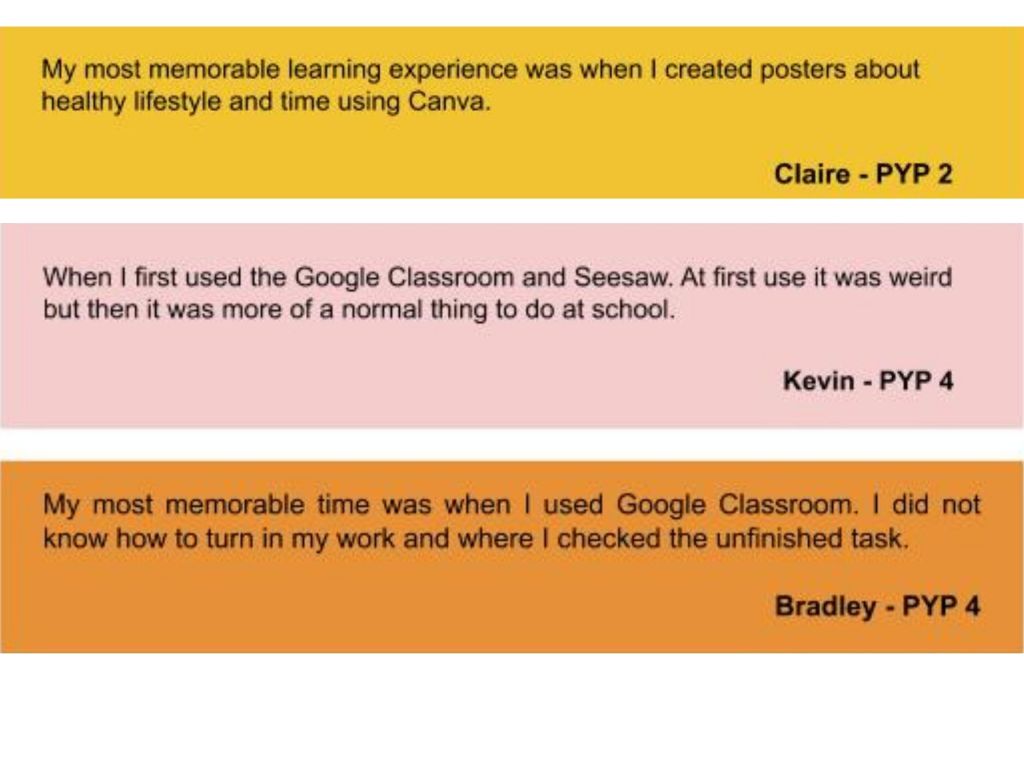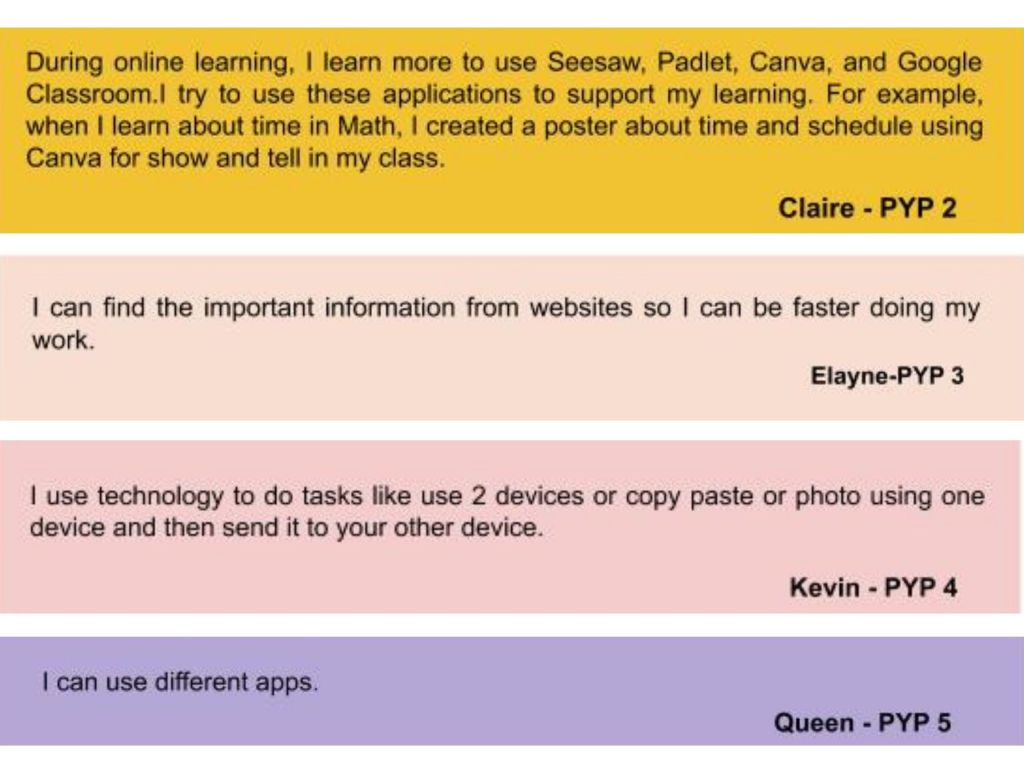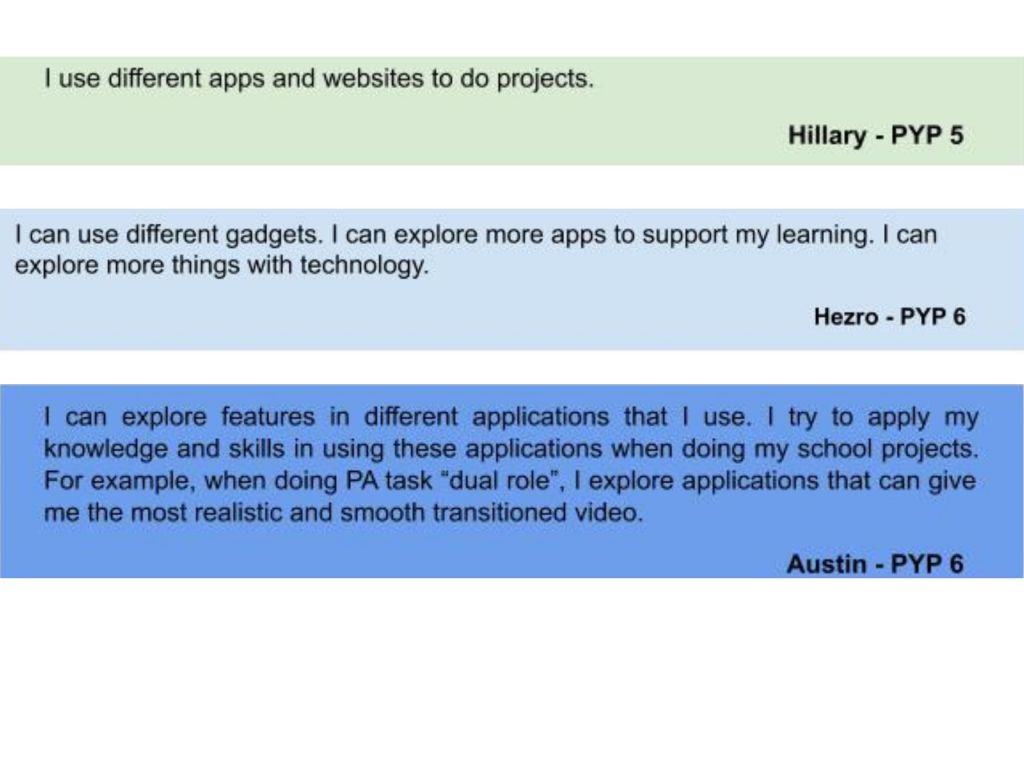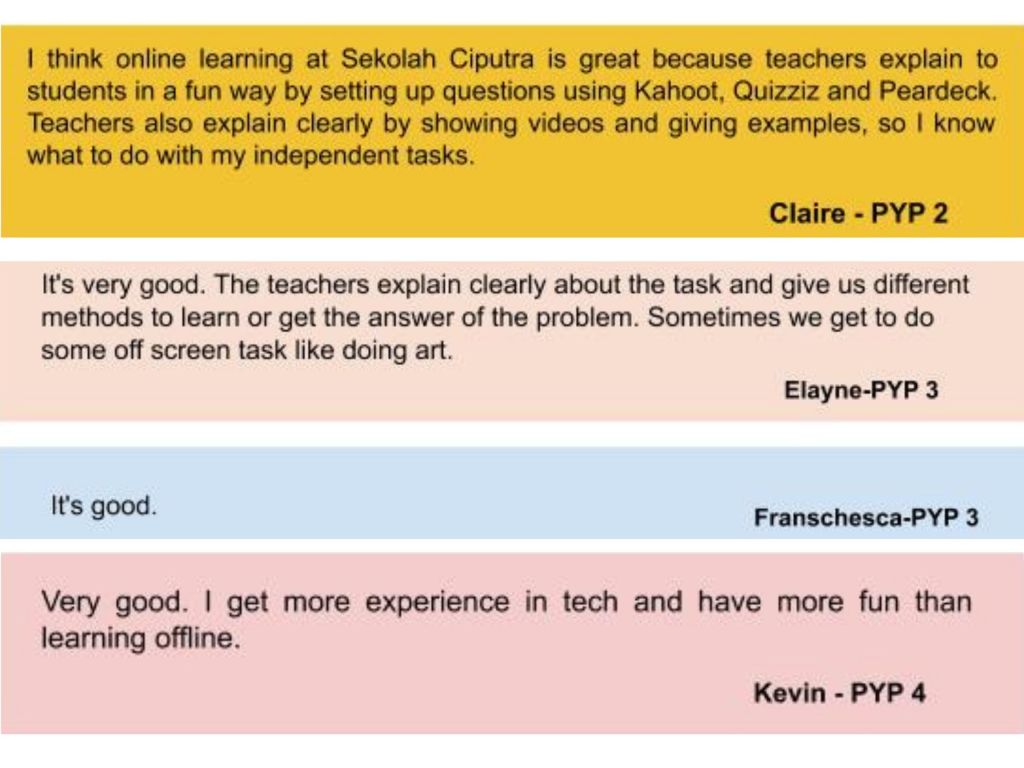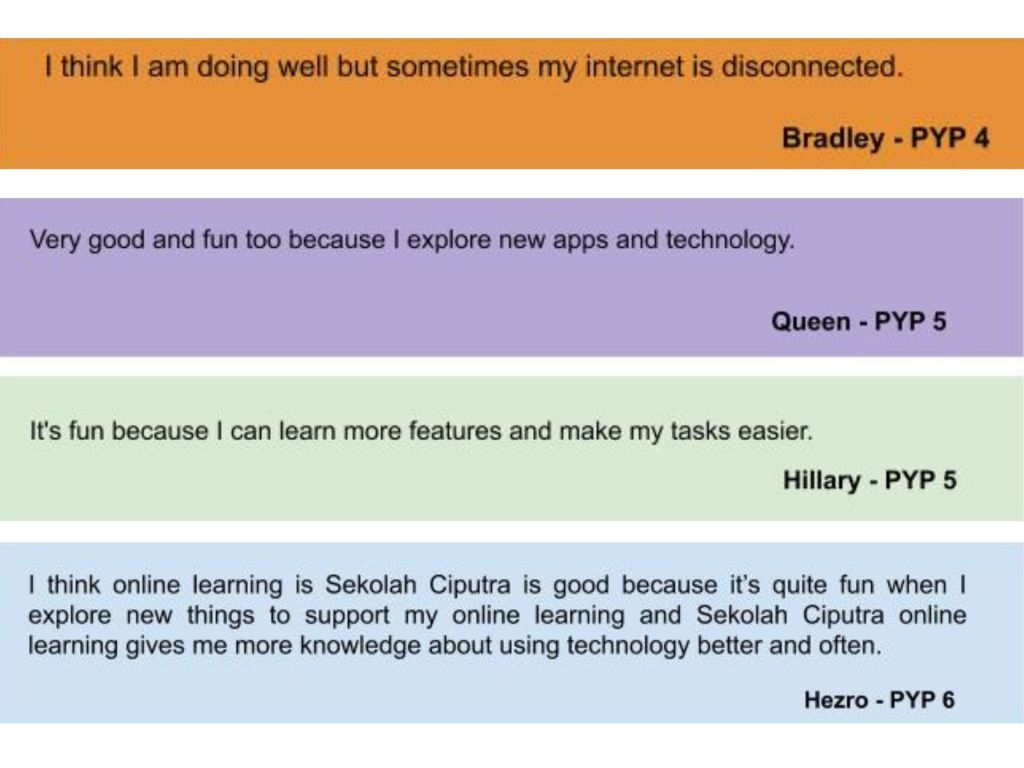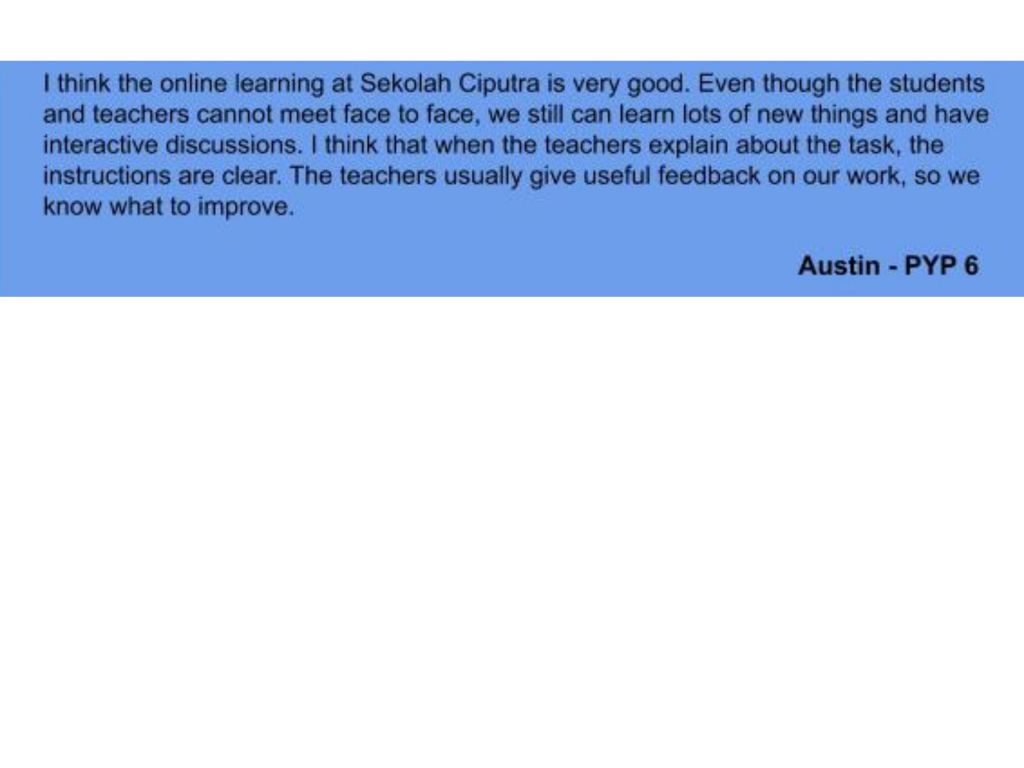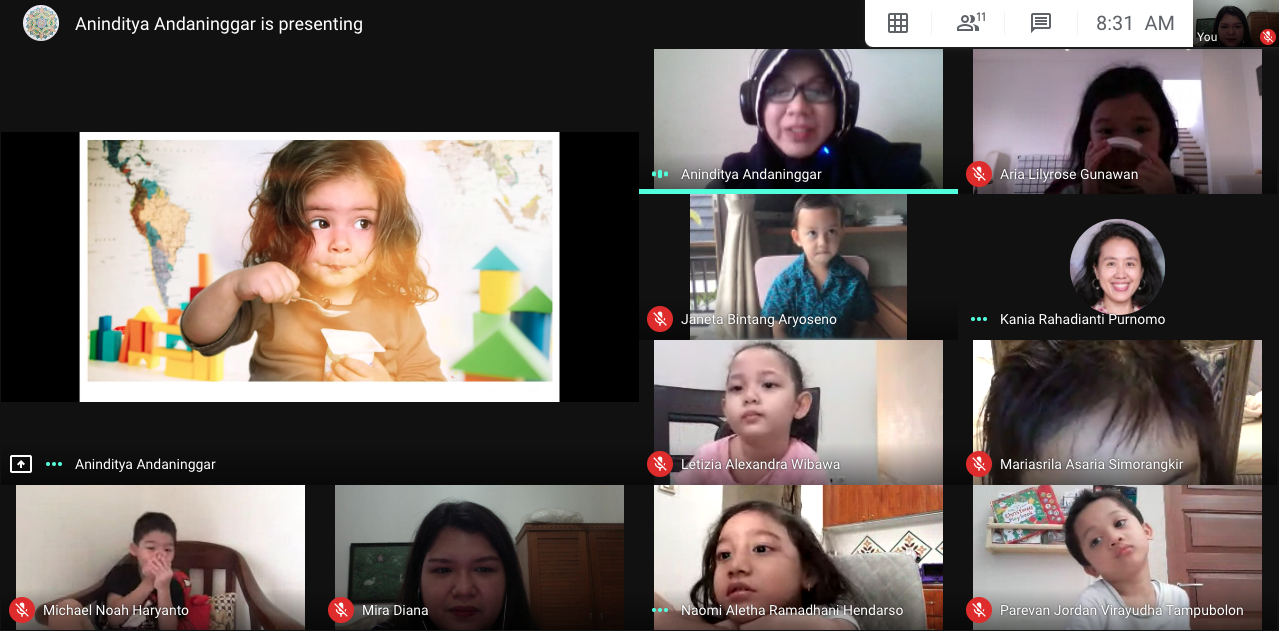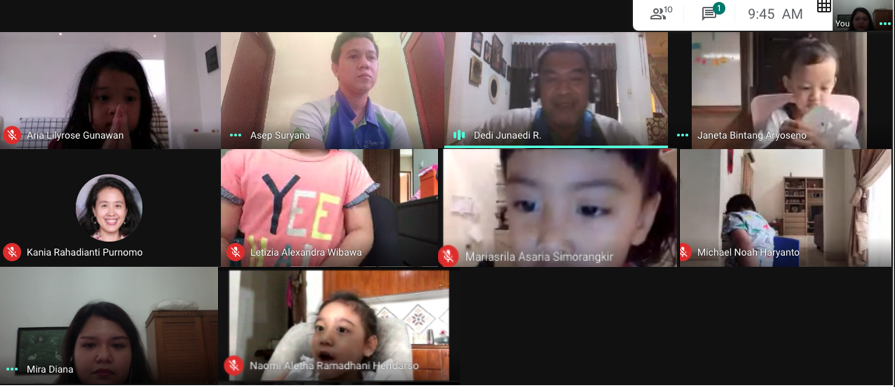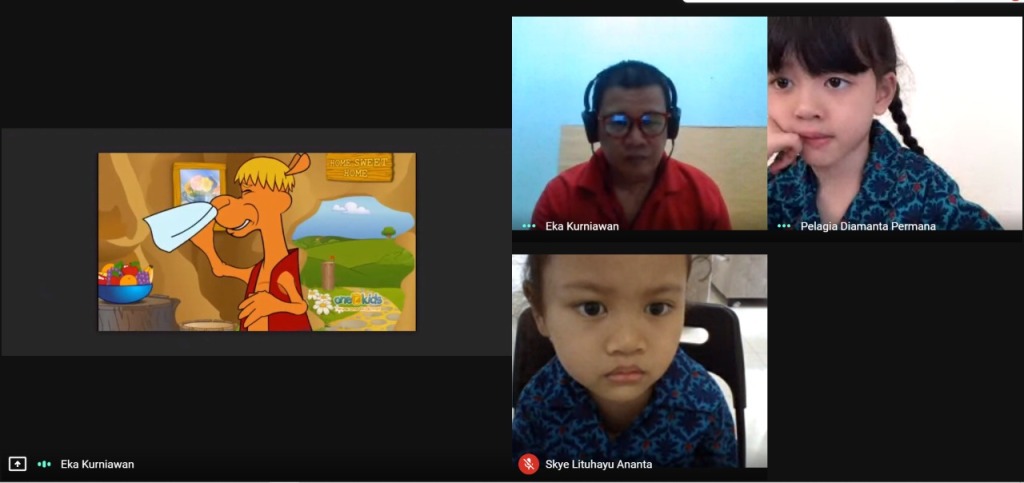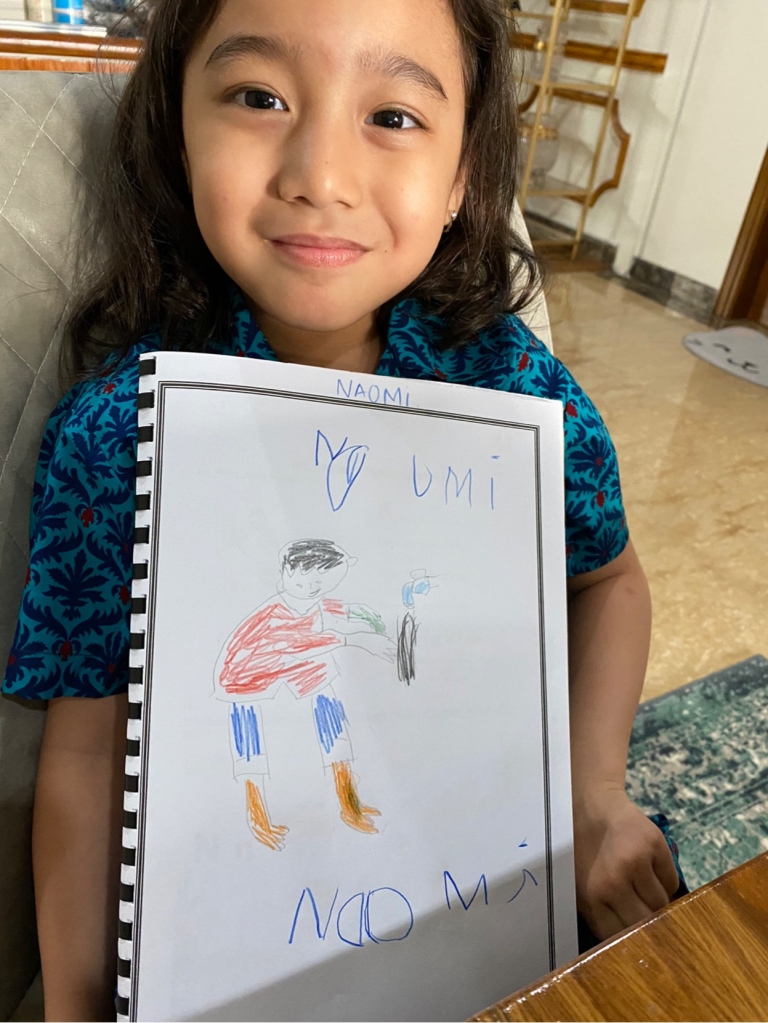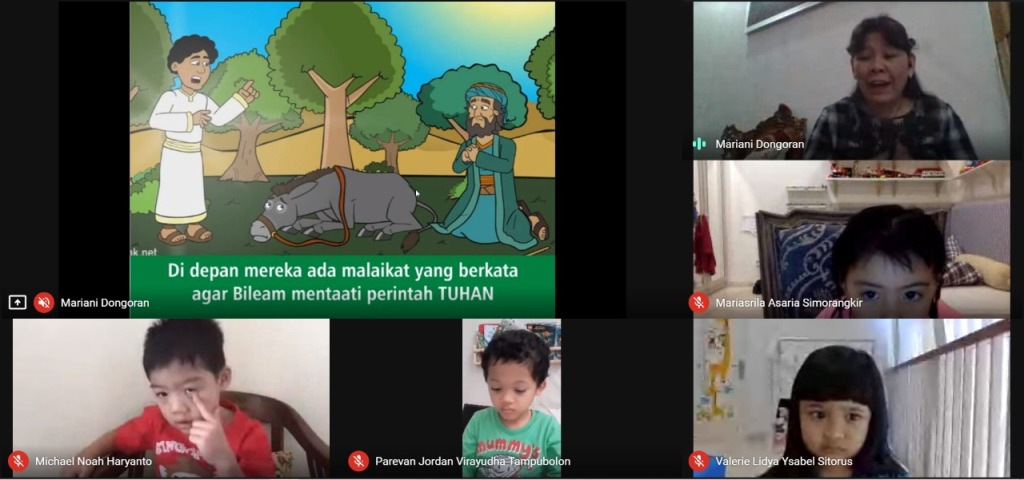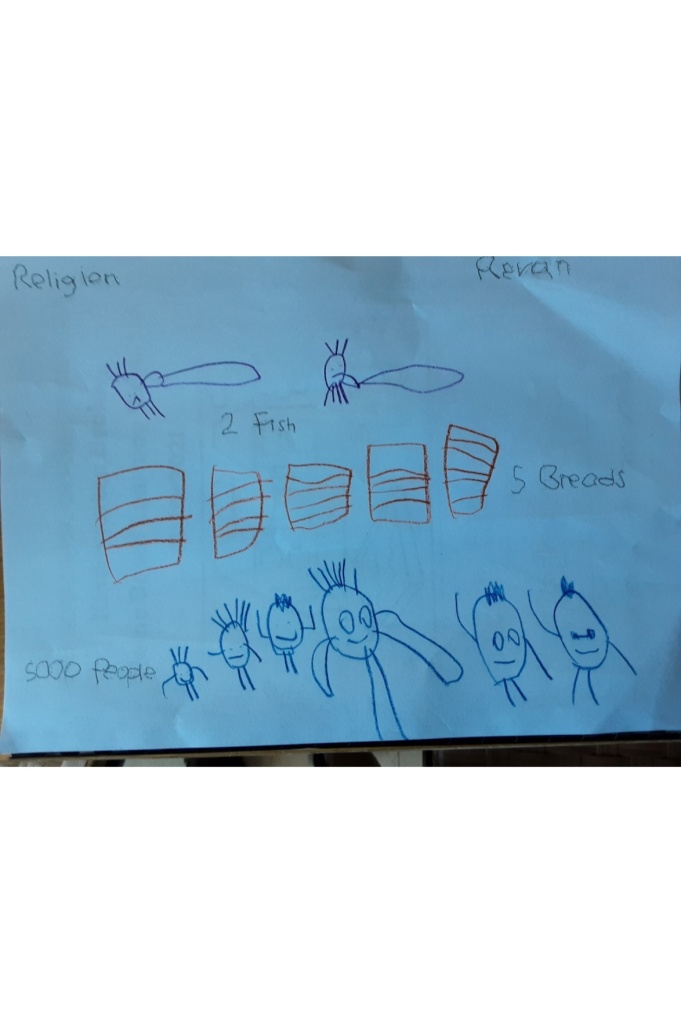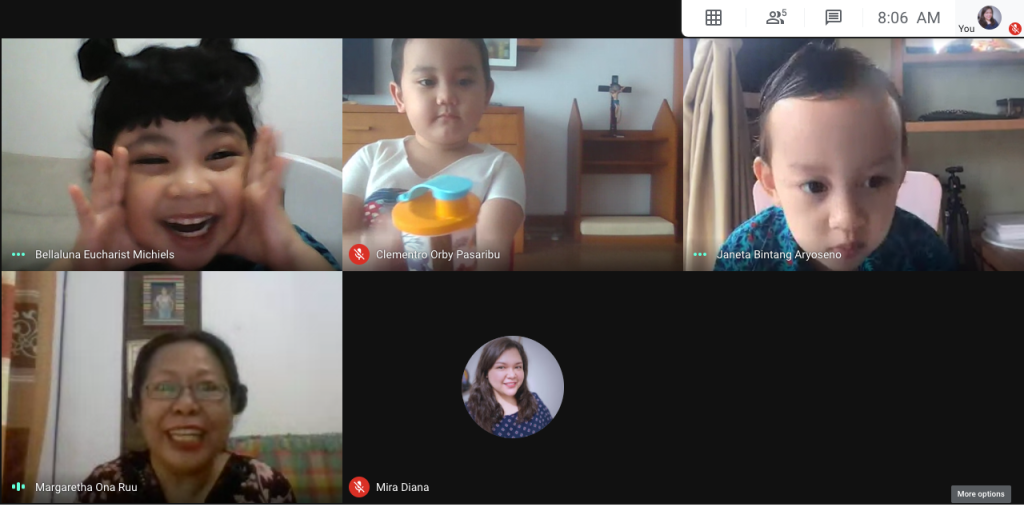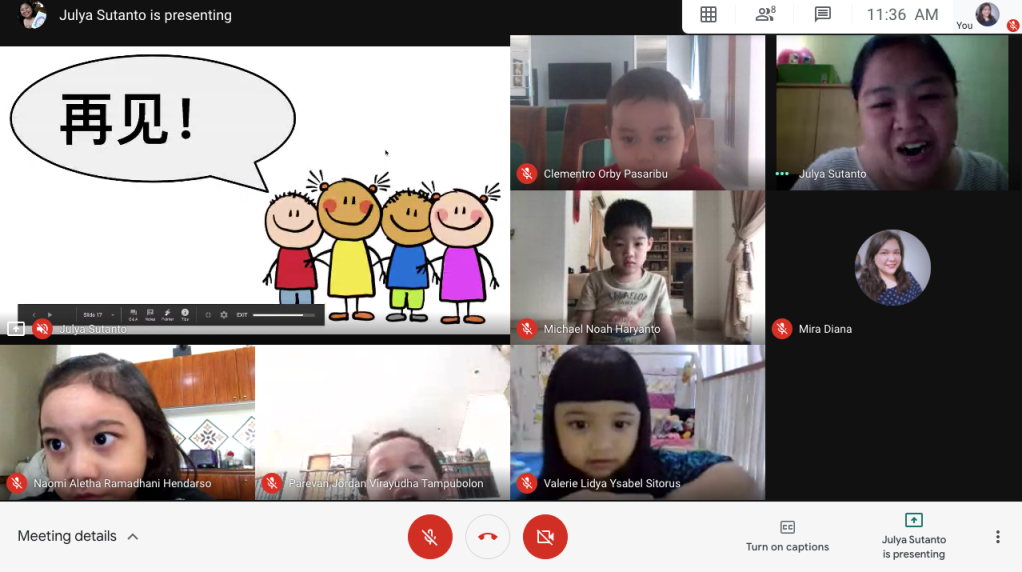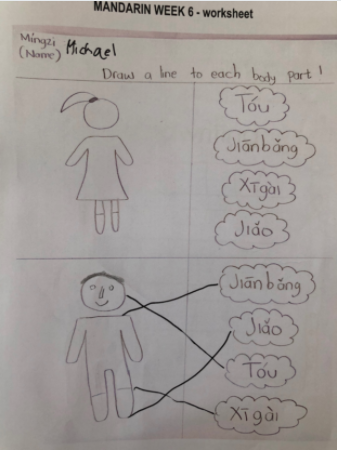Online learning and teaching
Online Learning Experience
The COVID 19 pandemic is still taking a toll on many aspects, including education. Last academic year, we had to conduct full online teaching and learning, and we made it!
It seems like, after a whole year, teachers and students are already used to doing virtual teaching and learning. Still, undeniably there is this longing of going back to school and seeing each other in person again.
When I asked my students whether they prefer online or face-to-face learning, they were all divided on their opinions! One of the students who preferred face-to-face learning blurted out an interesting opinion: “Miss, I have never seen you in person!” Indeed, that was what caught my attention, too. These students had never seen their homeroom teachers and some of their subject teachers in person.
Teacher-student relationship is truly vital. On our last day of meeting last academic year, some students cried because they were about to part with their homeroom teachers. I thought it was amazing given only seeing each other virtually.
We are now also used to having our pictures taken in squares. Oh, how we miss taking pictures in person again!
In term 1 of this academic year (2021-2022), we continued with our Home Learning Programme. However, as per Indonesian government regulations, we are obliged to begin Blended Learning Programme soon, and this means we will get to experience new things!
Another benefit from doing online teaching is the opportunity to learn how to use all these interactive teaching platforms that fulfill the needs of online learning. They make teaching purposeful with the interactive tools, resources, and content teachers need. Most of these platforms are also real-time, which make it easier for the teachers to check on their students’ engagement. Some of these platforms are Nearpod, Mentimeter, Classkick and Pear Deck to name a few. Others offer interactive and interesting games and quizzes such as Kahoot! and Quizizz, which are the students’ all-time favourites.
While others still prefer offline learning or face-to-face learning, it is undeniable that some students already take preference to online learning mainly for its flexibility of time and place, accessibility and probably for the habituation of it.
Despite the current circumstances, we are all experiencing the new way of teaching and learning. The Covid-19 pandemic has surely changed the face of education all over the world, and it gives evidence that we can all be capable of change!
By: Devi Godri
English as a Foreign Language Teacher
BINUS School Simprug
dgodri@binus.edu
Our Grade 4 Students’ Learning Journey with Guest Speakers
Learning online has brought many challenges for the students who have lost the opportunity for physical interactions and outdoor explorations for more than a year now. Aside from these, we can’t deny the fact that in the beginning, when everyone was still adjusting, it created a sense of isolation for our little ones who used to spend more time in school than at home. By now, many of these concerns have been addressed in virtual learning, as teachers continually innovated and looked for ways to adapt to the ‘now normal’ and ensure that approaches to learning are still applied.
During our first unit of inquiry, under the transdisciplinary theme “Who we are”, one of the approaches to learning (ATLs) that we focused on is research. One of the ways to research is to gather information from primary sources, and we were very privileged to have been given the opportunity to hear from experts from different fields such as medicine, nutrition and mental health. Although the teachers can teach and facilitate inquiry into these subject areas, having speakers talk about their own fields of expertise made the students more excited to learn.
Our first guest speaker is a young, Filipino doctor who grew up in Indonesia. Without second thoughts, he gave a resounding yes to our request to conduct another session with our Grade 4 students. Dr. Daren Laurente talked about ways to keep our lungs healthy and explained how smoking is extremely dangerous for our health. He also shared with us the connection between environment and health – that a healthy environment or community is essential for our health. He shared photos of when he rescued animals, released turtles to the sea and joined beach clean-up drives when he was still based in El Nido, an extremely popular tourist destination on the island of Palawan in Philippines. Dr. Darren brought a better learning experience for our students by not just imparting knowledge but also to reminding the children that we share our planet with all of God’s other creations.



Our second and third speakers talked about the circulatory and nervous system, respectively. Dr. Asmoko is a talented and skillful cardiologist. He did not hesitate to accept our invitation even though he was very busy. He spared 40 minutes of his precious time to help us enhance and broaden our students’ learning experience online. Dr. Asmoko was in the hospital, and he emerged in his scrubs when he introduced himself to the students. He shared with us the functions of the heart and showed a video of how it works. Dr. Asmoko also reminded the students about the importance of keeping our hearts healthy to avoid diseases. He reminded our students to start focusing on their health from an early age, to eat healthy and avoid junk/instant food so that they can grow up to be healthy and strong adults. Dr. Asmoko also emphasized to the students the importance of physical exercise.


Ms. Yoshiko, on the other hand, is a certified hypnotherapist. She talked about how our brain works and how amazing it is, how we all have different intelligences, how to stimulate our brain, and how to reduce stress by doing some simple breathing exercises. Like Dr. Darren and Dr. Asmoko, this is our second year to have Ms. Yoshiko as a guest speaker. The students asked her so many questions, and she answered all of them. She also praised the children and told them how amazed she is by their questions.


Our next three guest speakers are our very own school nurses, Nurse Debby, Nurse Maria, and student counselor Ms. Fransisca. Nurse Debby and Nurse Maria talked about the current pandemic and how the students can protect themselves from COVID-19. Aside from these, they also discussed the importance of having a healthy lifestyle and emphasized the value of having a balanced diet, having enough sleep, and keeping our bodies hydrated. Ms. Fransisca, on the other hand, provided useful insights on how to maintain a healthy mind. She pointed out looking after our mental health is just as important as looking after our physical health. She talked about the importance of getting enough sleep, managing our emotions effectively and respecting other people’s feelings. There is no doubt our school nurses and counselor not only delivered content but also encouraged discussion and critical thinking.




Having guest speakers in the online classroom had helped us, homeroom and co teachers, to fortify the topics and concepts we were exploring for the unit. We are grateful to them for engaging our students in authentic discussions and for inspiring our students to be mindful of what they do with their health – physical, mental or emotional. Our guest speakers have definitely made our learning more fun for the students because they have sparked students’ interests and developed in them a desire to learn more.
By Corita Silapan
Grade 4 Acting Level Head
BINUS School Simprug
ctorregoza@binus.edu
Networking Collaboration Among EY Learners
We would like to share some of our learning experiences from Sekolah Ciputra during remote learning. During “How The World Works”, PYP B students (5-6 years old) learned about natural patterns and cycles, including earth cycles, seasons, and weather. We learned about how day and night happen through science model experiments, role plays, and singing songs.
We networked and collaborated with other schools: Oakridge International School, India. In the beginning, our corresponding grade-level teams met to have discussions and to share learning practices. Then, we tried to instigate networking collaboration among our corresponding EY learners. Our students shared their learning experiences about day and night with their brothers and sisters in India. Our friends from India had a great time sharing their understanding of a related unit of inquiry. Our students showed their enthusiasm by questioning one another.
We had wonderful interactive sessions among young learners from different schools. During this pandemic situation, technology helps us to interact with others and to share best learning practices. We can see how collaboration happens and we can maintain an encouraging learning environment by supporting each other.
Vine (vine@sekolahciputra.sch.id)
PYP B Team Leader
Eight Habits for a Successful Online Teaching with Focus on Students’ Well-Being
When the school announced that every teacher will work from home in March 2020, I wasn’t prepared. Although we had a session on how to use Microsoft Teams prior to the announcement, I wasn’t still quite ready. We were given a week to set-up our online classrooms, and during that time, being prepared for me meant having tasks set-up in all my channels. The first couple of months of online teaching was spent chasing students (and even their parents) to submit their tasks. Everyone was stressed out – students, teachers and parents. Parents were either apologizing or complaining. Everyone was hoping for the academic year to quickly end and was looking forward to returning to school in July. Little did we know that we’re going to spend another school year in online classrooms. I wished I had taught my students better.
I spent the entire school break attending webinars and reading articles on how to do better at online teaching. I reflected and made a list of all the things that made the children engaged and beam with enthusiasm and those which I felt made them bored or wished they could have just watched YouTube videos instead of attending my class. My two daughters started online class a couple of weeks earlier, and I was able to observe and listen to them, their teachers and classmates. Through this, I was able to reflect and plan on how I’m going to deal with the students and deliver my lessons. When online school reopened, every single day was a learning experience for me, and I can honestly say that I’m still learning up to now. Read on and learn eight evidence-based habits for a successful online teaching which focus on students’ well-being.
- Maximize classroom time
Our students log in by 7:30 in the morning, and classes end at 2 in the afternoon. Do you really want them to spend another hour or two reading and answering your assignment? Being at home does not mean that children now have all the free time in the world. Give the children a break and let them spend time with their families (even if their bonding time is accessing their social media). You can give family-bonding tasks like acting out a story or doing other physical activities. I usually ask my students to upload these photos (with their parents’ permission) for the whole class to see. Giving less assignments will lower the children’s stress level during this time when they were supposed to be socializing with peers.
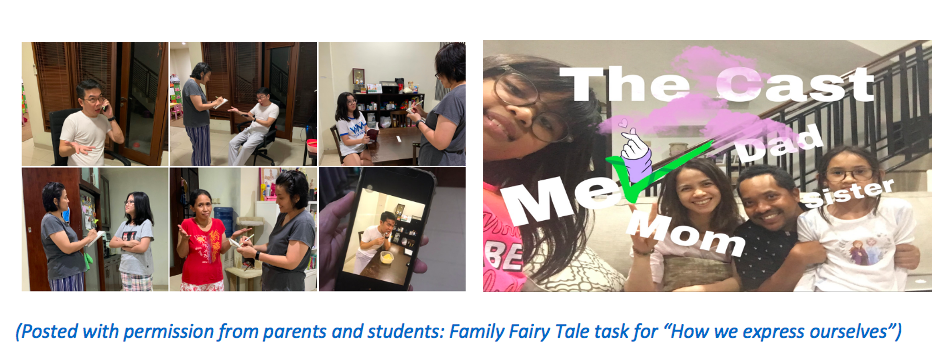
2. Praise students privately and publicly
MS Teams has this feature wherein you can send stickers of praise to your students. I use this when my students join competitions, were part of a school-wide assembly or were courteous and kind during class. I do this privately because I find it more meaningful that way. My students respond positively to this praises. There was even a time a student sent me a praise sticker, and that’s when I confirmed that it feels great! I also praise kids publicly, but I make sure to be specific with what I’m praising them for. For example in math, I would say, “I really like the way you showed your workings clearly and drew your models neatly.” Learning is a process, and it should be celebrated every step of the way. This is very meaningful because if students participate in an environment that nurtures and supports them, this belief will provide them the confidence to take the risk to learn. Even when it is difficult for them, they will feel that even a modest success is noticed and significant in the learning process.
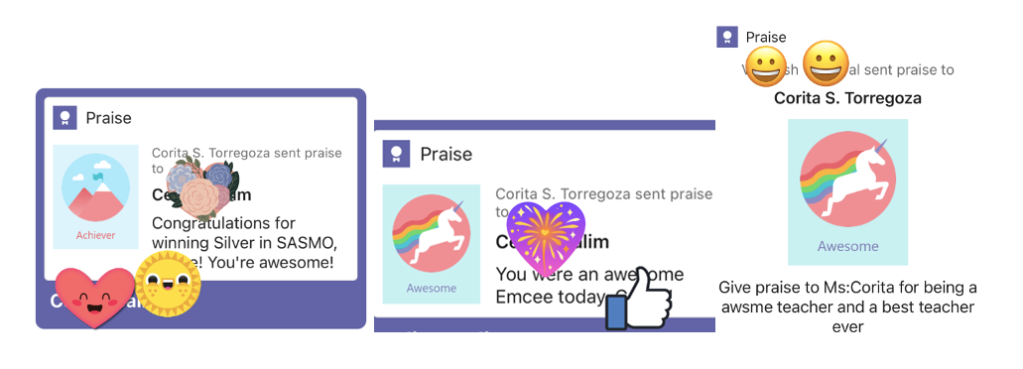
3. Build a culture of trust and encourage giving feedback
Students must realize that there is always a room for improvement in whatever they do. Providing them with regular feedback will enhance their learning and improve their performance. My students regularly give feedback to each other’s product and performance before, during and after a task or assessment. They usually follow the TAG method, although at times they say that they don’t have any questions. They don’t feel offended when others give suggestions for improvement, in fact they even graciously thank their peers for their suggestions. Being transparent in their communication will develop an atmosphere of trust in the classroom.
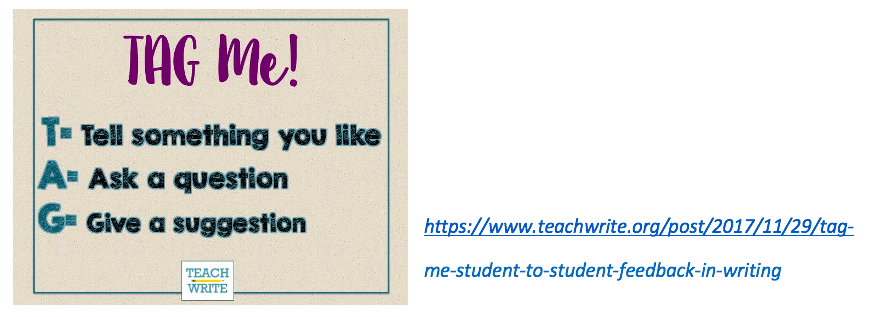
4. Encourage student engagement and maintain a positive learning atmosphere by posting thought-provoking questions and inspirational quotes
Kids may not be showing it, but the truth is, nobody is immune to the stresses this pandemic has brought. There are too many uncertainties – When is school going to reopen? When can I visit grandma and grandpa? When can I meet my friends? When can we travel abroad again? etc. By posting questions that focus on the present and magnifies the simple, yet meaningful things in their lives right now, we are somehow able to divert the kids’ thoughts. Simple questions like, What are your five strengths?, What are three things you are grateful for? What’s your favourite moment with your family?, What makes you laugh?, etc. I usually pair up my questions with alliterations like “Momentous Monday”, “Tickle Me Tuesday”, “Wishful Wednesday”, “Thankful Thursday” or “High Five Friday”. I usually post the questions and the schedule for the next day a day before, and my students are usually quick to answer them. What makes it exciting for them is that I also answer the questions by posting my response or sharing it with them verbally during class. There are also days when I would ask them to write positive notes to each other to lift each other’s spirits up. Sometimes, we share inspirational quotes with each other and discuss their meanings in class. I must admit that there were a few academic lessons sacrificed due to these discussions, but we can always catch up with those. I feel children’s mental health is more important right now.
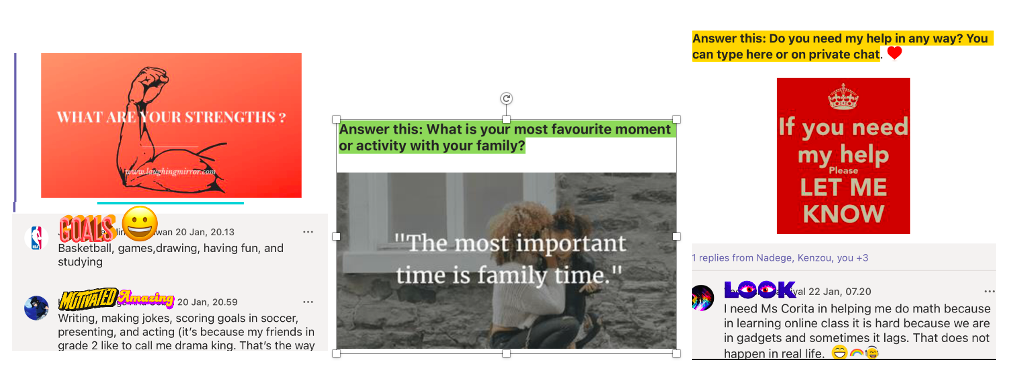
5. Establish a routine
The pandemic has changed our lives. It has filled us with a feeling of insecurity and an overwhelming feeling of uncertainty. Many of us are asking how we can manage the enormous disruption the pandemic has brought into our lives. With all that’s been happening, I thought establishing a routine with my students will somehow ease their tensions and stresses. The first 10 minutes of the class is spent on asking the students how they are doing and asking for volunteers to share their responses to my daily questions. Then, I go over the agenda for the day with them and ask if they have any questions. Fridays are for reflection writing where students are given prompts to reflect on their learning for the week. Thursday are for submitting Daily Mile (15-minute physical activity) photos or videos. The “Assignments” feature in MS Teams is where they submit their tasks, and they use the ‘Chat” feature for group collaborations (which are mostly done through a group call). Afternoon sessions usually have a 5-10 minute exercise especially when I notice the kids feeling sleepy. What’s funny is that we also have a routine for whenever I get disconnected due to Internet problems. Kids will just have to continue the discussion and wait for a few minutes because they know I’m reconnecting from my phone. Having been doing all these routines for the past six months make teaching and learning much easier for me and my students. It saves so much time and improve the students learning.

6. Differentiate by giving choices
How can I forget agency? Having to stay at home with parents who are also working from home, our children’s activities, let’s admit it parents, are mostly controlled by us, leaving them powerless. When kids were in school, mommy or daddy wasn’t around to tell them to sit properly, turn on their camera, raise their hands and answer the teacher’s questions, look at what they’re writing on their notebooks and listen to what they say to their friends or teachers. Now that they are at home, mom or dad are there peeking and eavesdropping all the time! I am a mom working from home so I know! So teachers, let’s not make online learning so controlled and rigid. Kids have enough of these at home. As teachers, we can empower our students through giving them choice. Agency is giving our students choices in how they show their learning. Give them the opportunity to think outside the box. I do this by giving my students choices to complete their tasks. I let them show their learning in various ways to show their individual skills and interests – through videos, PowerPoint presentations, songs, dance, poster, etc. Once they’re done, they show their work to the class. Valuing and making students’ work visible will not only give them a sense of pride but will also spark inquiry among others. Most importantly, giving students choices will allow them to take ownership of their learning.
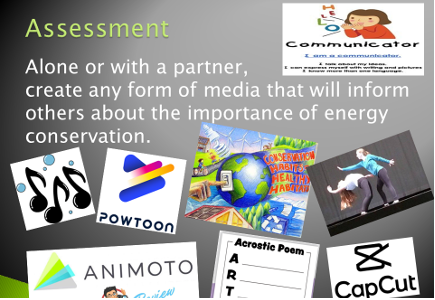
7. Communicate with parents regularly
I think the biggest key to a successful partnership with parents is communication. Communication builds understanding and trust which can lead to teachers and parents working better together to support the children’s development. What I do in my class is to send a weekly note to parents. I love telling stories to parents because as a parent myself, I would love to hear stories in the class from my own children’s teachers. Aside from stories, I also inform parents about the learning engagements we did in the class for the week that had just passed and what we will do for the coming week. I also share with parents the kids’ responses on our weekly reflections (without showing the names) so that they’ll know that I’m trying my best to address issues or adhere to students’ reasonable requests. I regularly assure the parents that everything is going well and that if there is something I need them to know about their child, I will email them. Many parents have responded positively to these letters saying that they are thankful for having me as their children’s teacher this year. This positive connection between me and the parents, I guess, has resulted to a higher level of trust and respect from my students, probably because they know that their teacher involves and respects their parents too.
8. Smile often, tell happy stories and get personal
Your students will feel more happy and relaxed to attend your lesson when you are more relaxed yourself. Before you click that “Join now” button, make sure to set aside your personal problems and frustrations and put on that big smile on your face. Put on that mask and be the students’ superhero – always positive, happy and smiling! Tell happy stories about your childhood, your holiday or your weekend. Get to know your students better by asking them to tell stories about themselves too. If you think you don’t have time for this, you can even incorporate it with your lessons. For example, when we were learning about procedural text, I asked the kids to show anything that they know very well about – how to edit a video, how to make a sandwich, how to play soccer, etc. In their reflections, almost many of them said that it was the best part of their week – showing their teacher and friends about their interests and talents. When we were inquiring about ancient civilizations, one of our tuning in activities was to search for ancient sites using Google Earth. I showed my students my house in the Philippines, and they were so cheery!
There are several other habits that I feel make my online teaching successful, but these are the ones that I find most important. Amidst the chaos happening around the world, mainly due to this pandemic, our love for teaching and our students love for learning should keep us going. Always let your students know that despite all the things happening out there, everything is good right there with you.
By: Corita Silapan
Grade 4 Class Teacher
BINUS SCHOOL Simprug
ctorregoza@binus.edu
Facilitating Students’ Choice, Voice, and Ownership During Remote Learning in Early Years
Teaching remotely is indeed challenging but teaching the early years students remotely is another level of challenge. As play and direct interaction are essential for them to discover new things and express themselves, operating on screen everyday could be a big limitation for their learning processes. However, we as teachers believe that playing and learning can happen everywhere and anytime. The student’s authentic expressions and ideas are our tools to design the learning which facilitates their agency.
Our previous unit was “How We Express Ourselves”. During normal school days we used a variety of role play, performance, and art workshops. It was rich and full of interactions. Creating and presenting happened everywhere. As this year we have a different situation, we endeavored to design the learning without restricting the students’ opportunities to choose and drive their own learning. One of the successful stories was the “Jungle Boogie” performance.
It started with gathering students’ interest in art and discovering the theme they were interested in. Dancing and role play were the most popular choices of all. The theme was chosen by exposing students to different dances and songs and voting for the most interesting one. Jungle Boogie came out as the winner. From there, we allowed students to choose which animal or role they wanted to be or play and supported this by sending materials to them in their Home Learning Package to create their personalized costumes.
The most memorable and special thing about this experience was witnessing students’ persistence and enthusiasm in creating their costumes from zero while they were developing their skills as well. They began to cut independently, to draw independently and even to color independently with their sense of ownership giving them the eagerness to design and to finish the costume. They had their voice heard every time they wanted to share their personalized costume design. They put different forms of patterns, colors, or even shapes.
Not only did they prepare their own costume but students also learned how to prepare the performance itself. They created the stage, the invitation for the audience, the poster and also the audience’s tickets. By doing that, students learned transdisciplinary skills and grew their knowledge. They wrote numbers on the ticket and they learned how to share information on their poster through pictures and symbols. They learned how to measure whilst making their costumes. Last but not least, they learned how to express themselves through art.
Distance is only one thing that challenges us to think outside our comfort zone. By having this experience, we believe that play and learning should not be limited by anything if we allow the students the freedom to share their voice, choice and ownership of their learning.
Children are magical, they make all things possible. Enjoy the ride!
Julia Ika Pratiwi (juliapratiwi@sekolahciputra.sch.id)
Playgroup Team Leader and Playgroup B Teacher
How Do We Use Technology at Our School?
Learning is fun and challenging at the same time and even more so during this pandemic outbreak. The school community has to adapt to the changes where educators, parents and students have to develop a flexible mindset to adapt to new ways of interaction and learning. To cope with the pandemic, schools maximize the use of technology for learning and seek to transform fully into a digital classroom. Sekolah Ciputra modifies the classroom setting into a series of virtual classrooms where blended learning happens synchronously and asynchronously.
To understand more about the use of technology in Sekolah Ciputra, let’s hear from a sample of current students.
What are the best platforms/apps for you in learning?
What are the most memorable learning moments for you when you use digital platforms?
How will you maximize the use of technology for your learning?
What do you think of your online learning at Sekolah Ciputra?
Given the positive feedback from students and while the current situation is not ideal, remaining flexible in our approach shows that effective learning and positive outcomes are achievable if we try. Furthermore, it reinforces this concept with students to see that there can be more than one way to achieve a result.
PYP Elementary Team of Sekolah Ciputra 2020-2021
Incredible Specialists!
Since Week 6, Kindergarten students have welcomed Ibu Ninggar into our classroom. Ibu Ninggar is our School Counselor who supports us in learning about who we are. Students talked about how they grow by looking at the progression of pictures from baby to child. During Ibu Ninggar’s Personal Development Programme, students learned about the potential people have at different stages in their life (from a newborn until four years old). Students compared a baby’s abilities to their current skills. To enhance students’ understanding, Ibu Ninggar assigned activities in our booklet. One of the activities focuses on exploring ways to keep safe when interacting with other people. Students will soon have the opportunity to talk about the different comfort levels concerning physical action to other people or themselves.
Kindergarten students have been joining sessions with our specialist teachers who have lessons integrated with our inquiry unit. The Physical Education session helps students develop their strength through balance and flexibility exercises. Students were risk-takers when they followed the teacher’s directions. Thank you, Pak Dedi, Pak Alwan, Pak Asep, and Ibu Harna for making exercise fun, enjoyable, and safe!
Our school encourages students to respect people of different religious beliefs and to develop a deeper understanding of their religion through class sessions. The photos show how some Kindergarten students learned about personal hygiene in Islam religion sessions, while others learned about respect and Bible stories in the Christian religion session. Catholic students had the opportunity to learn about kindness. A big thank you to our religion teachers Pak Tisno, Ibu Etha, Ibu Mariani, and Pak Eka for teaching us every Monday.
As part of the third language choice at school, some of the Kindergarten students take Mandarin class. In one of the sessions, students learned about the names of body parts in Mandarin and some necessary skills, such as greeting people in Mandarin and counting from 1 to 10. Xie Xie, Lao Tse Julya, for teaching our little ones this beautiful language.
Online teaching in the Early Years
I am currently working as an Early Years class teacher at BINUS SCHOOL Simprug, a co-educational school in Jakarta catering to students from Early Years 1 to Grade 12. The school is recognized as an International Baccalaureate (IB) “World School” offering Primary Years Programme, Middle Years Programme, and Diploma Programme.
Early Years is part of IB PYP. At BINUS SCHOOL Simprug, we have three Early Years levels, namely Early Years 1, Early Years 2, and Early Years 3. The curriculum is guided by an inquiry-led transdisciplinary framework where students can learn, develop, and strengthen their understanding, knowledge, and skills across and beyond the six subject areas which include language, mathematics, science, social studies, arts, and personal, social, and physical education.
For this 2020 – 2021 academic year, I teach Early Years 2 students, aged between four and five. There are two classes in Early Years 2. I am blessed to have 11 students enrolled in my class composed of one Korean and 10 Indonesian students. I am also assisted by an Indonesian co-teacher who helps me in the preparation and planning of activities, lesson plans, and instructional materials. We collaborate to make our sessions more engaging, productive, and fun-filled for our students especially during this online teaching.
Online class schedule in Early Years 2 starts from 8:30 in the morning and ends at 12:30 in the afternoon. Each session is 30 minutes wherein 20 minutes are for the lesson proper and the remaining 10 minutes are for students’ support and transition time. Thirty minutes is allocated each for snacks and lunch as break time periods. During the break, students may leave the class and take their snacks or they may stay in the meeting room while I play instrumental music. The rest of the sessions are for homeroom classes and specialist subjects. As a homeroom teacher, I teach all subject areas except for music, religion, and language classes such as Chinese and Indonesian subjects.
I start the class with circle time. During circle time, we do our morning prayer, say our greetings with each other, take attendance, fill up the calendar, sing some songs, share our feelings for the day, and dance to the beat through music and videos. These are parts of our class routines which I introduced to my students during the first few weeks of the start of classes. We also came up with some essential agreements in our class such as the regular wearing of school uniform, raising of hands during class discussions, asking permission when going to the toilet, and eating during break time only. During class time, my students are accompanied by adults usually with their mothers and some by the guardians and nannies. To instill in them the value of independence, we have been practicing how to turn on the microphone and camera in their gadgets by themselves.
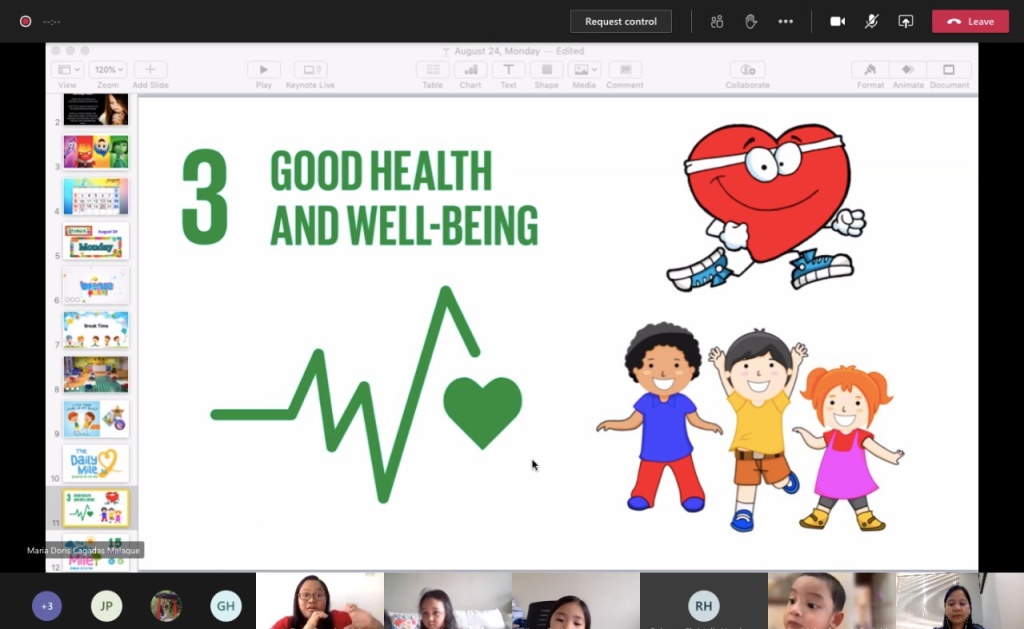
In Early Years 2, we have four transdisciplinary themes – Who we are (Family), How we express ourselves (Feelings), How the world works (Five Senses), and Sharing the planet (Plants). For this term, (July-September), our Unit of Inquiry is Who we are focusing on the members of families, types of families, roles and responsibilities of each family member, and why we need a family. When I introduced to the class the unit of inquiry on family, I asked my students to draw their prior knowledge of what family means to them. Knowing the prior knowledge of my students about family will help me determine how to develop my lessons. It is then my responsibility to strengthen their conceptual understanding about family and at the same develop and introduce new concepts to them that will add new knowledge. Some of the learning engagements that we did about family were the following: inviting parent resource speakers, making of stick puppets of the family members living with them, show and tell activity of their family pictures, making of family picture frame, and drawing activities about their small and big families.

Every week, we always have storytelling, a play time session, arts and crafts, penmanship activities, and physical fitness session. My students love and enjoy doing all the music and movement activities. We also learn phonics, numbers, measurement, patterns, and rote counting. I give them weekly homework through a Reading Log Activity. Every Wednesday, my students receive a storybook in a movie version that I make and which their parents read to them. This is followed by the answering of the reading log notebook. For this term, my students are learning the reading skill on creating mental images wherein they draw what they imagine based from the story.
To have constant communication with parents, I send every Friday a weekly note in which they see photos of their children during the online classes, the announcements and reminders for the upcoming weeks, and the list of activities that we did for the week and for the upcoming week. In my class, I provide ongoing and formative assessments with rubrics. The students are also given the chance to do self-assessment and self-reflection. Ongoing assessments usually take place during the homeroom sessions and sometimes, I call them individually while the rest of my students are with my co-teacher. I also make sure that my students are given the chance to have their choice, voice, and ownership in doing the activities in class.
Online teaching in the Early Years is indeed both exciting and challenging experiences for me as a teacher. It is exciting because I get the chance to explore different platforms in doing the online classes such as MS Teams and Zoom. I am amazed at how each platform provides interactive ways to communicate with my students, parents, and teachers. I have learned how to do screen share of my documents, PowerPoint presentations, music, and videos. In school, we are using the licensed MS Teams for our regular classes, parents’ conferences, and teachers’ meetings. We only used the licensed Zoom application for school assemblies.
On the other hand, it is challenging because I need to prepare PowerPoint presentations everyday with engaging activities that will sustain the attention span and focus of my students during the whole learning process. The preparation is actually a tedious task. Another challenge is to incorporate the teaching strategies I used in the normal classroom setting such as inquiry-based, play-based, and hands-on learning to my online classes. I always believe that students learn best during their social interactions inside the classroom with their friends and classmates.
With the full support of everyone – school, teachers, parents, and students, I was able to manage and overcome these challenges. Yes, I still feel tired everyday, but I also enjoy teaching with my students as teaching has always been my passion. I am looking forward to that day wherein I can have face to face teaching again with my students. I think this is also what everyone is hoping for. I guess, with this new normal, face to face will still be subjected to physical distancing with the observance of the minimum health standards, and that will take time. So for now, we just have to go along with the change. As what Alan Watts said and I quote, “The only way to make sense out of change is to plunge into it, move with it, and join the dance.” With a positive outlook and optimism, I know that beautiful things will come out amidst this pandemic. Someday, when we look back at this time, we survived and we made it because we work as one.
By: Maria Doris C. Malaque
Early Years Class Teacher
BINUS SCHOOL Simprug
mmalaque@binus.edu





